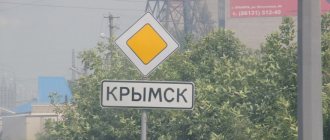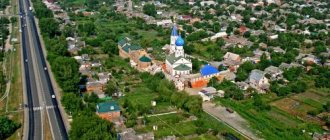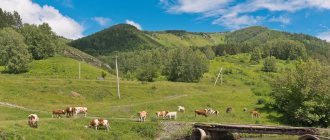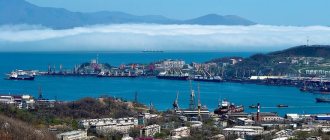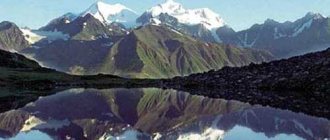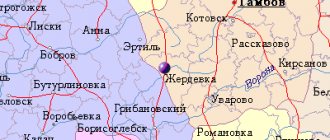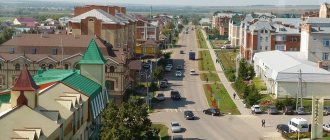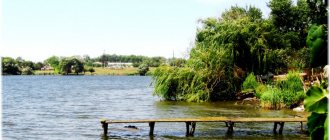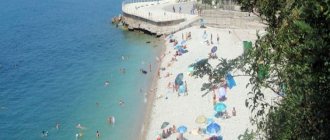For other places with the same name, see Gornyak (locality).
City in Altai Krai, Russia
| Miner Miner | |
| City [1] | |
| Coat of arms | |
| Location Gornyak | |
| Miner Location Gornyak Show map of Russia Miner Gornyak (Altai region) Show map of Altai Territory | |
| Coordinates: 50°59'N 81°28'E / 50.983°N Latitude 81.467°E / 50.983; 81.467 Coordinates: 50°59'N 81°28'E. / 50.983°N 81.467°E / 50.983; 81.467 | |
| A country | Russia |
| Federal subject | Altai region [1] |
| Administrative region | Loktevsky district [1] |
| City of district significance | Miner [2] |
| Based | 1751 [3] |
| City status from | 1969 |
| Height | 270 m (890 ft) |
| population size (2010 Census) [4] | |
| • General | 13 918 |
| Administrative status | |
| • Capital from | Loktevsky district [1], city of district significance Gornyak [1] |
| Municipal status | |
| • Municipal district | Loktevsky municipal district [2] |
| • Urban village | Miner [2] |
| • Capital from | Loktevsky municipal district [2], urban settlement Gornyak [2] |
| Timezone | UTC+7 (MSK+4[5]) |
| Postal code [6] | 658420 |
| OKTMO ID | 01625101001 |
Miner
(Russian: Gornyak) is a city and the administrative center of Loktevsky District in Altai Krai, Russia, located 360 km (220 mi) southwest of Barnaul, the administrative center of the region.
Population: 13,918 (2010 census); [4] 15,779 (2002 census); [7] 15,833 people (1989 census). [8] Previously known as Zolotukha
(until 1942). It is located next to the border between Kazakhstan and Russia.
Miner
(Altai region)
OKATO code:
01225501
Founded:
1942
Urban settlement since:
1946
City since:
1969 City of district subordination (Loktevsky district, Altai Territory)
Center:
Loktevsky district
Telephone code (reference phone)
| 38586***** | 32-20-9 |
Deviation from Moscow time, hours:
4
Geographical latitude:
51°00′
Geographical longitude:
81°28′
Altitude above sea level, meters:
270 Sunrise and sunset times in the city of Gornyak
Travel from Barnaul to Gornyak (Altai Territory)
Kalmansky - quiet plain; Topchikhinsky – hilly plain; Aleysky - “striped birch”; Shipunovsky is a multi-lake region; Pospelikhinsky - forest-steppe with pegs; Rubtsovsky - forest and semi-steppe. My dear one, Loktevsky, became the final one.
For some reason, it always seemed that a federal highway, like the one we were driving along, should be busy, with cars scurrying back and forth. But no - the road was clear, and I could enjoy the landscape moving outside the window.
It's October. The picture is familiar to the Russian eye - there are flat, free, wide fields all around. The trees have lost almost all of their autumn plumage. The usual forest belts and fields were replaced by a coniferous forest, the forest by a maple grove, the maple grove by “derezovoy,” as acacia is called in these places, acacia by new fields...
“And above all this is the sky - just touch the cloud...”
There were also some negative “sights”: abandoned houses, monuments to those killed on the roads, which strangely do not coincide in location with the “Dangerous Section of the Road” signs, eternal asphalt “patches” and potholes, inextricably merging with the second Russian disaster.
Rubtsovsk greeted us with two beautiful lakes - Gorkoye and Rakity. Once I stopped near the first one to rest - it was summer, and seagulls were beautifully circling over the lake. With the onset of cold weather, the birds left their temporary shelter - now only the wind blew up the water, and the gray sky rippled in it.
When you travel a long distance, you can come across a lot of interesting village names and mysterious road signs. Our country is rich in oddities: we came across “merry” villages - Funtiki, Uryupino, Bezrukavka, Lokot, Novenkoe; “agricultural” - Winter, Tractor, Grain, Ear, Grain; “family” - Schmidt, Pushkino; “Soviet” - Labor, Torch of Socialism, Pennant, Soviet Way. But I still couldn’t figure out the mystery of the “Resistant Wall” sign; even Google didn’t help me with that.
A nasty, through-the-autumn wind blew all the way, but when we passed the stele with the inscription “Loktevsky District,” it suddenly died down and large fluffy white flakes began to fall. They melted on the windshield and shimmered under the light of oncoming headlights. The wipers mercilessly erased all this beauty, and I peered into the space outside the window that was beginning to darken.
My father’s “edge” is a strikingly contrasting place. The sky cannot be cleaner and bluer, the sunsets amaze with a riot of colors – and the shallow hilly plain, poor in plants, with white solonetz paths. Almost resort heat in the summer, rain is rare - but if it rains, it’s a week-long downpour. And frosty winter, piercing steppe winds. Adobe, clay-straw houses - and dish antennas, siding and tiles - and under them narrow, loophole-like windows.
We spent more than five hours on the road and finally a post appeared - “Nikolaevka”. We drove into a quiet, darkened village. Distant, rare lights flickered in the houses. Old-timers say that there used to be a large collective farm here, now all that remains of it are a couple of empty slag walls from the former “ram workers” and a sign: “Collective farm “Rassvet”. Or “Sunset,” as the locals bitterly joke.
Turn left, a little forward and stop near a gray roofing felt house, where we were already greeted with an open door. Having had our fill of the latest village gossip, tired, with full bellies and peace in our souls, we fell asleep to the sound of train wheels rustling outside the windows on the passing railway.
The next morning a fair amount of snow fell. The first thought that came to me the next morning sounded something like this: “Why is it so light?”, the second: “It’s good that we wore winter tires.” But, we must pay tribute - it was beautiful.
Two days of hospitality passed quickly. The next morning there was even more snow. Having somehow compacted all the pickles and jams with which we were loaded, we decided not to go with such a load to the gas station in Gornyak - the best option seemed to us to be the opportunity to fill up with fuel in the village of Sovetsky Put, which is just along the way.
And again the same track, only now snow-covered. Now the village is already left behind. Here's a gas station, here's Kazakh customs...
By the way, we spent a total of about 1,000 rubles on the road: for 35 liters of AI-92 gasoline at the then price of 26.4 wooden rubles per liter. Fortunately, we didn’t have any incidents with inspectors on the road, and the car didn’t let us down: it turned out to be a real workhorse.
In general, if your soul asks for travel, be brave, go for it! Even if it’s a short trip within your native land.
Map
| Gornyak: maps |
Miner: photo from space (Google Maps) Miner: photo from space (Microsoft Virtual Earth)
| Miner. Nearest cities. Distances in km. on the map (in brackets along roads) + direction. Using the hyperlink in the distance , you can get the route (information courtesy of the AutoTransInfo website) | |||
| 1 | Staroaleiskoe | 36 (42) | IN |
| 2 | Zmeinogorsk | 53 (67) | IN |
| 3 | Rubtsovsk | 60 (160) | WITH |
| 4 | Kurya | 87 (123) | NE |
| 5 | Novoegorevskoe | 93 (197) | NW |
| 6 | Uglovskoe | 96 (251) | NW |
| 7 | Pospelikha | 111 (181) | WITH |
| 8 | Krasnoshchekovo | 115 (153) | NE |
| 9 | Newcomer | 134 (225) | WITH |
| 10 | Wolf | 136 (244) | NW |
| 11 | Shipunovo | 146 (263) | NE |
| 12 | Charyshskoe | 151 (441) | IN |
| 13 | Mikhailovskoe | 152 (516) | NW |
| 14 | Ust-Kalmanka | 178 (338) | NE |
a brief description of
Located on the northwestern spurs of Altai, south of the Kolyvan ridge, in the steppe area in the extreme southwest of the region, 3 km from the river. Zolotukha (left tributary of Alei), 4 km from the railway. Neverovskaya station, 360 km southwest of Barnaul.
Territory (sq. km): 28
Information about the city of Gornyak on the Russian Wikipedia site
Historical sketch
Founded in the 18th century. like the village of Zolotukha.
The Zolotushinsky (polymetallic) mine was opened in 1751. Mining operations continued until the mid-19th century and were resumed in 1939.
In 1942, on the site of the ancient village of Zolotukha, a miners’ settlement of the Zolotushinsky mine under construction, named Gornyak, was formed. Since 1946 PGT Gornyak. City since 1969
The name Gornyak is due to the mining profile of the village.
Economy
Extraction and enrichment of polymetallic ores (JSC Altaipolymetal). Neverovskaya crushing and screening factory (production of construction lime).
Light and food industry enterprises: JSC - “Gornyatsky Bakery Plant”, “Gornyatsky Dairy Plant”, a branch of the Rubtsovskaya Garment Factory, etc.
In the Loktevsky district, wheat, buckwheat, peas, sunflowers, oats, beets, carrots, cabbage, and potatoes are grown. They raise sheep, pigs, cattle, and birds.
Deposits of polymetals, limestone, granite.
Culture, science, education
Museum of Local Lore.
Memorial in honor of fellow countrymen who died on the fronts of the Great Patriotic War of 1941-45 (1983).
Museums, galleries, exhibition halls
Loktevsky Museum of Local Lore 658420, Altai Territory, Loktevsky district, Gornyak, st. Abashkina, 7-a Phone(s): (38586) 31943
Architecture, sights
30 km from Gornyak there is a complex of memorial places reflecting the history of mining production in the 18th-19th centuries: Loktevsky silver smelting plant (1782-1892), Loktevsky copper mine (1727-1896), etc.
22 km from Gornyak (near the villages of Lokot and Sovetsky Put) is a complex of settlements and burial mounds (2nd millennium BC - 1st millennium AD).
| Population by year (thousands of inhabitants) | |||||||
| 1959 | 13.9 | 2000 | 16.0 | 2010 | 15.0 | 2017 | 13.0 |
| 1970 | 16.6 | 2001 | 16.1 | 2011 | 13.9 | 2018 | 12.7 |
| 1979 | 16.0 | 2003 | 15.8 | 2012 | 13.6 | 2019 | 12.4 |
| 1989 | 15.8 | 2005 | 15.6 | 2013 | 13.5 | 2020 | 12.3 |
| 1992 | 15.9 | 2006 | 15.6 | 2014 | 13.2 | 2021 | 12.1 |
| 1996 | 16.6 | 2007 | 15.5 | 2015 | 13.1 | ||
| 1998 | 16.2 | 2008 | 15.4 | 2016 | 13.0 | ||
